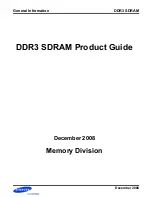
Chapter 4
Digital I/O
Analog Output Series User Manual
4-2
ni.com
Static DIO
Each DIO line can be used as a static DI or DO line. You can use static DIO
lines to monitor or control digital signals. Each DIO can be individually
configured as a digital input (DI) or digital output (DO). All samples of
static DI lines and updates of DO lines are software-timed.
P0.6 and P0.7 also can control the up/down input of general-purpose
Counters 0 and 1, respectively. The up/down control signals, Counter 0
Up/Down and Counter 1 Up/Down, are input-only and do not affect the
operation of the DIO lines. For more information, refer to Chapter 5,
.
Digital Waveform Generation (NI 6731/6733 Only)
The NI 6731/6733 can generate digital waveforms. This behavior is also
referred to as correlated digital I/O because there is no dedicated clock
source for the digital operation. Refer to the
section for a list of possible sources.
The DO waveform generation FIFO stores the digital samples. The
NI 6731/6733 can use DMA transfers to move data from the system
memory to the DO waveform generation FIFO. The DAQ device moves
samples from the FIFO to the DIO terminals on each rising or falling edge
of a clock signal, do/SampleClock. For more information on DMA
transfers, refer to the
You can configure each DIO line to be an input, a static output, or a digital
waveform generation output.
DO Sample Clock Signal (NI 6731/6733 Only)
Use the DO Sample Clock (do/SampleClock) signal to update the DO pins
with the next sample from the DO waveform generation FIFO. Because
there is no dedicated internal clock for timed digital operations, you can use
an external signal or one of several internal signals as the DO Sample
Clock. You can correlate digital and analog samples in time by choosing
the same signal as the source of the DO Sample Clock, AI Sample Clock,
or DI Sample Clock.
If the DAQ device receives a do/SampleClock when the FIFO is empty, the
DAQ device reports an underflow error to the host software.















































